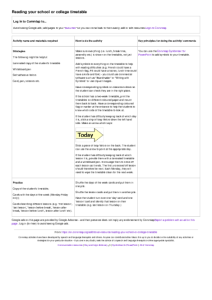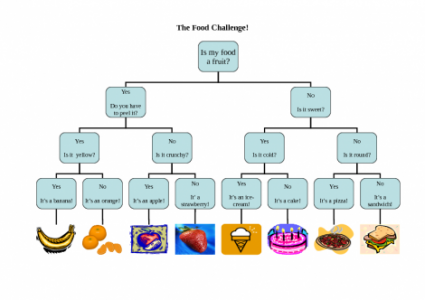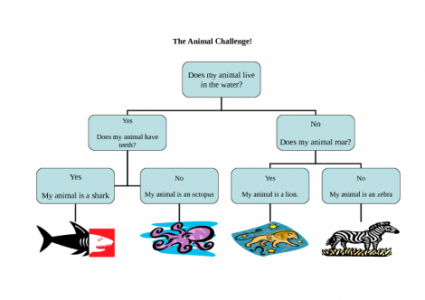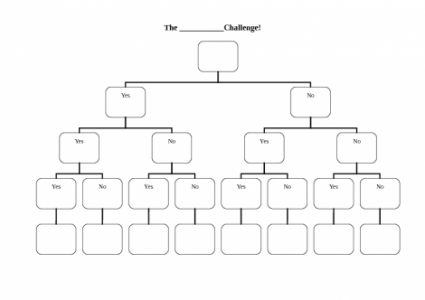Search
User login
Topic “Post School Education”
For people in post school education.
Use two key word instructions in everyday activities
| Activity/strategy name and materials required | How to do the activity | Key principles for doing the activity and comments |
|---|---|---|
| Making a cup of tea - telling you what to do Kitchen with everything appropriate for making a cup of tea. You don't need to have them out and ready though - finding the stuff can be part of the activity. | 1. Sit in the kitchen at an empty table and say you want to make a cup of tea - but you don't know what to do (or have forgotten what to do); 2. See if the person suggests getting something - e.g. teabag or cup. If the person suggests something, e.g. teabag, ask where you can find it. See if they can tell you - e.g. "cupboard" - but if not, give then some suggestions - e.g. "in the cupboard or in the fridge?" - have a look in the fridge if they suggest that. If the person doesn't suggest anything, give a funny choice, e.g. shall I get a cup or a paint brush - if they suggest "paint brush", get one and then look really confused when you have it - see if they can correct you, or if there is not paint brush to find, look equally confused. Get a cup even if they don't prompt you to get one (as if you've suddenly remembered!) 3. As you go along, try to get the person to extend the language - but don't try to get them to repeat, also try to avoid asking leading questions (for example avoid asking "shall I stir the tea now?"). For example if you have a tea bag and a cup, and they say "cup", indicating that you put something in the cup, put something else in the cup - e.g. a pen. If they then say teabag, do something with the teabag - but don't put it in the cup. At this point they may try to put the two words together, e.g. "teabag...cup". If not, you can give them a choice. Try the following: "teabag in the cup or pen in the cup" (you might get a response of "teabag" in which case put it somewhere - not in the cup); or "teabag in the cup or pen in the bag" or "pen in the bag or teabag in the cup" (easiest because the target phrase is last). | If the person is not familiar with making a cup of tea already, you should spend some time doing this - talking them through what you are doing as you make the tea. The key principle here is to give the minimum amount of prompting. You will need to adjust the level of prompting so that the person is a little bit challenged by the task - but not so much that there are long pauses (what constitutes a long pause will vary from person to person). As far as possible, you are trying to literally do what the person says - so if they say something that's potentially ambiguous, choose a more amusing interpretation of what they have said. The idea is that this activity should be really fun, and also prompt the person to try and add more information and be more accurate. |
| Everyday activities Whatever is required for the activity. Activities could include:
|
Text mangle tool
See the "comments" link associated with this page for more information about this tool.
What this tool is for
The purpose of this tool is to be able to get a flavour of:
- What an early reader might get from text;
- What can be gained from text where only a selected number of high frequency words are used;
- How a strategy of signing could assist comprehension;
- Or...to create your own Jaberwocky poem!
See the comments page for more information on this tool.
use switches to turn something on or off
| Activity/strategy name and materials required | How to do the activity | Key principles for doing the activity and comments |
|---|---|---|
| Keeping cool: learning to sustain an action Fan, (with optional ribbons attached) Mains switch control box | Configure the controller so that the fan is on as long as the switch is held down. Hold down the switch and let the child/adult feel the breeze. Let them do the same. | The child/adult should experience holding down the switch and feeling the breeze. On release the breeze stops. State, "On" and "Off" as you and the child/adult press and release the switch. |
| Learning to use a switch to turn a device on Fan (as above) | As either of you press the switch say, "on." When it stops say "off." Show them the effect of the breeze, blowing your hair or rubbing your arms because it is cold. | |
| Switching a device on and off (Do this in a subsequent session after the child/adult has understood the process in the above activity). A device to control, for example: fan toy computer monitor bubble machine | Let the child/adult turn the fan on and off modelling the vocabulary as you go. Reinforce this learning with different devices at different times and places. |
Make a choice using two switches
| Activity/strategy name and materials required | How to do the activity | Key principles for doing the activity and comments |
|---|---|---|
| Establishing motivators Items/activities the student may be interested in. Items/short activities the student is not interested in. |
| Don't use two things which are motivating for the student as you won't be able to tell whether they've succeeded in expressing a choice or not. |
| Establishing the switches to use Appropriate switches to use Typically you might start off with a couple of large recordable buttons (for example "Big Macs". You may have already established this with single switch work and established that they can make something happen with a single switch). | You may need to work with an occupational therapist to establish what type of switch a student can use - particularly if they have complex physical difficulties. | |
| Making choices Pair of switches Motivating and un-motivating items/activities (see the activity "establishing motivators" above) | If they don't press a switch you may need to:
Consistency of pressing Do they appear to be pressing one switch more than another, or do they appear to be choosing the switch randomly? Swapping the switches around from time to time will help you to know this. If they aren't consistent, you could try making the switches more different, for example:
You could also try:
|
Today arrow
Picture:

Picture description:
Arrow to indicate today on a timetable.
Reading your school or college timetable
| Activity name and materials required |
Reading your school or college timetable
Created 15 May 2012; updated 6 December 2024.
Common irregular past tense verbs
Created 15 May 2012; updated 6 December 2021.
Common irregular past tense verbs
These can be used with activities sheets from www.commtap.org including:
- make phrases in past tense using irregular verbs 1
- make phrases in past tense using irregular verbs 2
Some common irregular past tense verbs for use in the above activities
See below if you are not sure what an irregular past tense verb is.
The Animal Challenge
Created 15 May 2012; updated 18 July 2015.
Blank 3 question challenge
Template for creating questions using a flowchart: see https://en.commtap.org/language-communication/develop-question-skills for ideas as to how you could use this.
Created 15 May 2012; updated 16 July 2015.
Symbols - overview and sources
Symbols, communication symbols or picture symbols, are a powerful and systematic support for communication.
Description
Communication symbols are sets of images which represent words and concepts in a language in a consistent way. They are designed for use with people having difficulties accessing text and for those with communication difficulties.
They can be used with:
Support Commtap to keep it online
Thank you for visiting Commtap.
Please read this message as it is extremely important.
- Visitor donations mean we can continue to host over 1,000 free activities to support speech, language, and communication development.
- Visitor donations mean we can continue to provide free resources to address a wide range of communication needs, including limited speech or language, interaction challenges, and needs associated with conditions such as developmental language disorder, autism, and cerebral palsy.
- Visitor donations mean we can continue to provide resources to support the work of speech and language therapists, teachers, teaching assistants, parents, and carers.
- Visitor donations mean we can continue to provide the free key word sign dictionary (bks.org.uk) which has over 2,000 Makaton and Signalong signs.
We know that not everyone is able to afford to pay to access these resources, however, if you can, please make a donation to keep the site going.
Thank you
Google ads on this page are provided by Google Adsense - and their presence does not imply any endorsement by Commtap. Report a problem with an ad on this page. Log in (for free) to avoid seeing Google ads.







